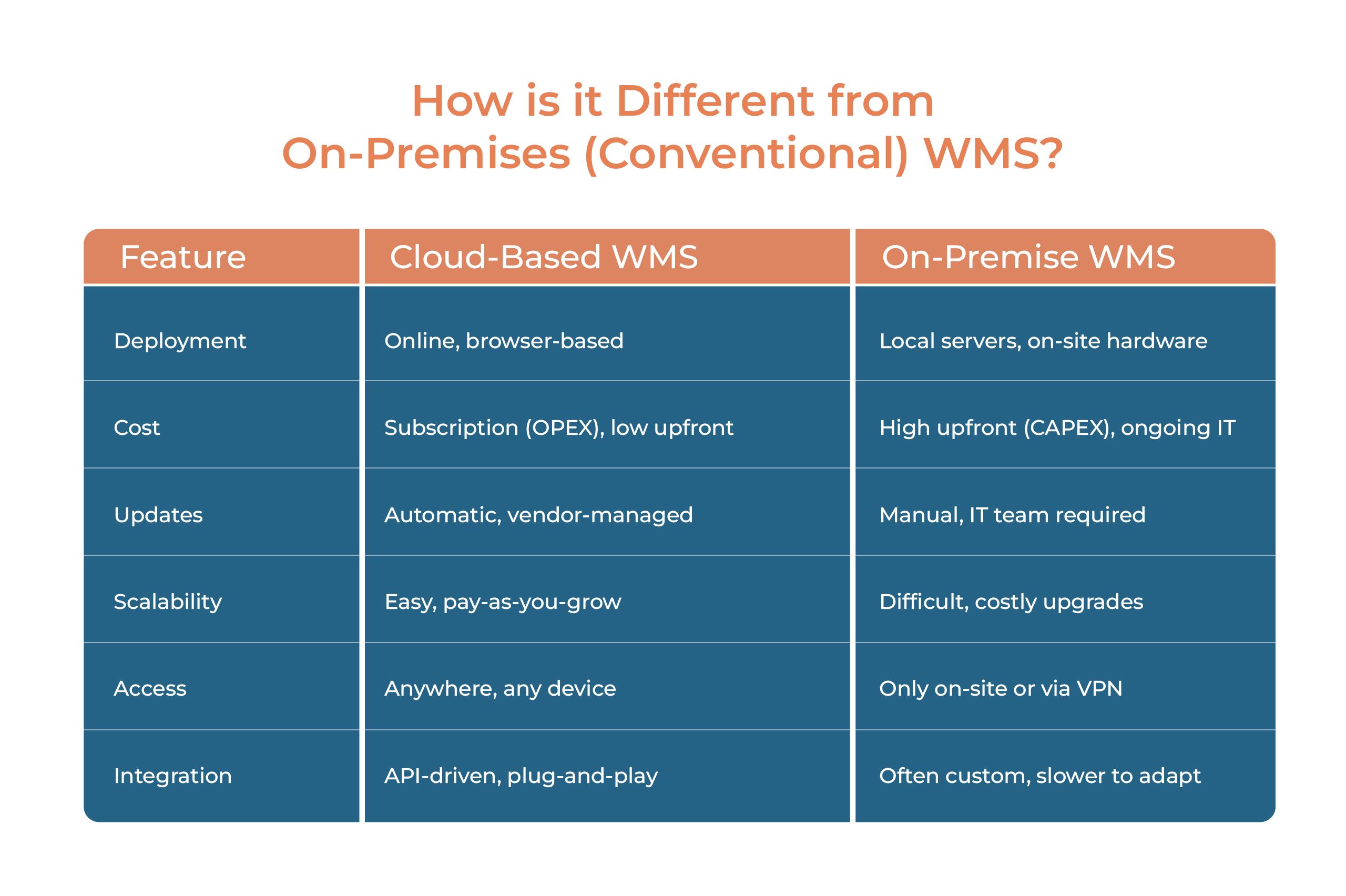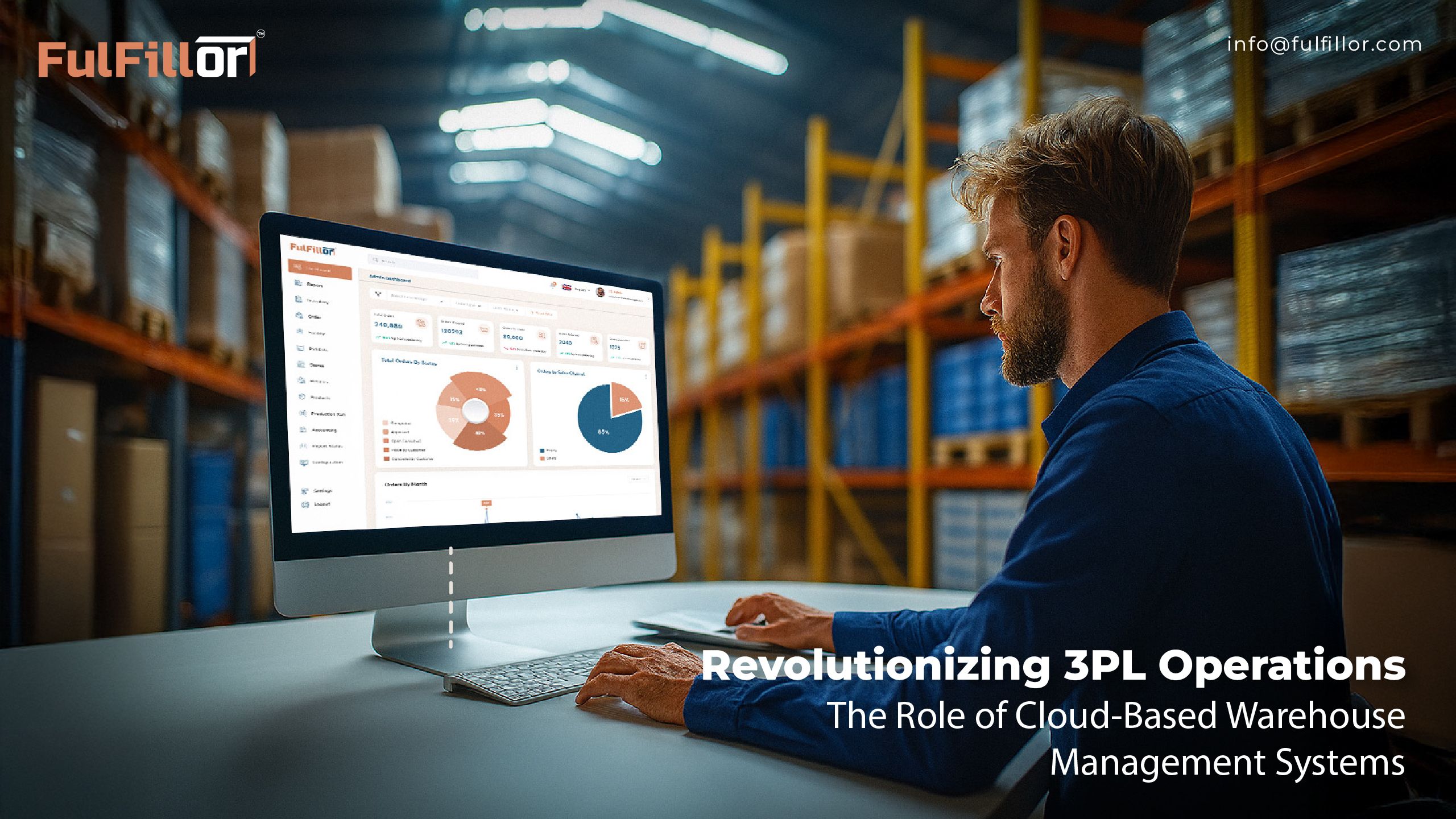Revolutionizing 3PL Operations: The Role of Cloud-Based Warehouse Management Systems
The logistics industry is undergoing a major shift, and cloud technology is leading the charge. For 3PL providers, a Cloud-Based Warehouse Management System isn’t just a software upgrade; it’s a strategic transformation. By offering real-time inventory data, automation, seamless integrations, and scalable architecture, cloud WMS platforms like Fulfillor are redefining warehouse efficiency. As customer expectations rise and supply chains grow more complex, embracing cloud logistics software has become not just an option but a necessity.
This blog explores how cloud WMS tools like Fulfillor 3PL WMS are transforming warehouse operations, streamlining fulfillment, and elevating customer experience. If you’re ready to ditch outdated systems and embrace digital agility, read on.
What Is a Cloud-Based WMS? A 3PL-Focused Overview
A Cloud-Based WMS is a software application that is hosted on the internet (in the cloud), which allows you to manage stock, orders, pick-pack-ship, and returns across multiple warehouses, in real-time. Instead of cumbersome servers, on-premise IT infrastructure, manual updates, and clunky IT teams, notch up to a cloud-based, automatic, enterprise-grade WMS system. Just an internet connection and a browser, and you’re all set to utilize the advantages.
Cloud WMS vs On-Premise WMS: What’s the Difference?
Before, on-premise WMS was the norm for many years. You’d purchase the software, install it on your servers, and maintain, update, and secure it. With complete control, it brought substantial upfront costs and ongoing IT headaches.
Cloud-based WMS turns that script completely around. It’s a subscription model, also called a software-as-a-service model, that eliminates the need for capital expenditures. We've seen countless businesses making a switch. Here's a detailed comparison of the two:

Cloud WMS Deployment Models: Which One Fits Your 3PL?
The perfect deployment for your business depends on your size, security requirements, and your budget. Here are the main types:
-
Public Cloud: Shared infrastructure. Good for growing firms such as start-ups and SMBs seeking an economical and quick solution. Here, your data is safe and kept secure!
-
Private Cloud: A dedicated environment for your business, providing higher control at a premium. More secure, more customizable, perfect for the enterprise with precise compliance requirements.
-
Hybrid Cloud: Mix of both. Uncommon in WMS, but potentially useful if you have to connect a legacy system with a cloud tool. Helpful if your business needs sensitive data stored on-premises to be flexible.
-
Multi-Tenant SaaS: The most common and least expensive model for today's businesses. You log in over the web, and they take care of everything, be it updates, security, or uptime.
How Cloud WMS Is Transforming 3PL Logistics?
What are perhaps the greatest day-to-day challenges for 3PLs? Late shipments, stock errors, lack of visibility, and manual processes that cost time and money. But now, the evolving logistics industry is shifting from being reactive to proactive. This is where the cloud-based warehouse management steps in and changes the game.
Here’s how a 3PL cloud WMS like Fulfillor is changing the game:
-
Monitor Inventory in Real-Time: No more guessing and blind spots. Know exactly what you have in stock, where it is, and when it runs low, in your warehouses, at all times.
-
Enhance Order Fulfillment: Streamlined end-to-end, i.e., pick, pack, and ship process. Minimize mistakes and speed up order fulfillment, even during your busiest periods.
-
Seamless Integration: Plug-in to Shopify, WooCommerce, ERPs, and shipping carriers in minutes, not months.
-
3PL Warehouse Automation: Employ barcodes, RFID, and even robotics to reduce manual labor and increase accuracy. From smart kitting to automated replenishment, a cloud-based WMS eliminates errors due to factors and expedites fulfillment.
-
Cloud Logistics Solutions: Stay on top and control everything through one unified data-driven dashboard, whether you’re in the warehouse or working remotely.
-
3PL Supply Chain Visibility: Your customers want to know where their items are. With Cloud dashboards and portals, “where’s my order” calls are a thing of the past.
-
Improved Customer Experience: Faster shipping, lower error rates, and increased visibility make customers happy and boost retention.
Real-World Example: A fast-growing 3PL business in the US turned to FulFillor’s cloud WMS to manage unexpected surges in e-commerce sales. With real-time inventory tracking and automatic carrier selection, they reduced shipping errors by 40% and increased on-time delivery rates, even as order volume doubled. Fulfillor now supports 3PL providers across North America, the UK, and the Middle East looking to scale with cloud-native logistics solutions.
Steps to Implement a Cloud WMS
Installing a cloud WMS shouldn’t have to be complex and overwhelming. Here’s our structured stepwise approach to implement a cloud-based WMS solution:
-
Evaluate Your Needs: First and foremost, you should know where you are -- what your current operations challenges are, your plans for growth in the future, and your particular business requirements.
-
Vendor Choice: Look around and select a Cloud WMS partner who matches your business priorities, target market, and includes the required features (such as Cloud WMS for 3PL) backed by robust support. Find a partner, not just a vendor.
-
Data migration or integration: This includes transferring old inventory data, customer lists, and order history to the new system. And make sure it easily/ seamlessly integrates with your current ERP, e-commerce platforms, shipping carriers, etc.
-
Configuration and Customization: Cloud WMS is generally very configurable, but some customization is necessary to accommodate unusual workflows. Partner with your vendor to customize the system to your specific operational requirements.
-
Training and Rollout: However great the features may be, if no one knows how to use them, then it’s pointless. Adoption is key. Train staff to use the new system effectively. Plan a gradual implementation schedule to reduce the burden and provide for modifications.
-
Continuous Optimization: There is no such thing as “set it and forget it” with a cloud WMS. Always keep an eye on performance, collect feedback, and use new functionalities to enhance the operation.
Emerging Trends in Cloud WMS for 3PL Logistics

1. Smarter WMS Through Tech Integration
Today's cloud WMS solutions leverage artificial intelligence (AI), the Internet of Things (IoT), robotics, and machine learning to drive productivity and improve effectiveness. IoT provides real-time tracking, and AI is responsible for the demand inflow forecasting and the pick-path optimization. Robotics automation decreases the need for human labor by automating the mundane repetitive tasks while reducing the potential for errors in order fulfillment processes.
2. Actionable Insights from Real-Time Data
Modern leading WMS solutions use big data and analytics built in for smarter, faster decisions. These next-gen WMS solutions provide a dashboard for warehouse managers to proactively manage shifts, space, and demand. Predictive intelligence minimizes downtime and allows inventory to be in sync or better aligned with actual business demand.
3. Virtual Warehouses and Transparent Chains
Through digital twins, 3PL WMS can simulate and optimize processes without the need to disrupt daily routines. 44% of companies already use digital twins, and 15% are planning to adopt them, according to McKinsey. Blockchain is also being used for secure, transparent logistics and multi-party records.
4. Driving Sustainability Through ESG-Focused Tools
WMS capabilities such as intelligent slotting and optimized routing help save energy and reduce emissions. Automated ESG (environmental, social, and governance) reporting eases compliance and earns the trust of clients, enhancing client confidence. Products making ESG claims enjoyed an accumulated growth of 28 percent, further proofing that sustainability means business.
Why Cloud WMS Is the Future of 3PL Logistics
In summary, Cloud WMS is transforming the 3PL logistics world. Its scalability, adaptability, and cost effectiveness make the solution an ideal fit for businesses that are interested in streamlining operations and scaling effortlessly.
If you want your logistics business to be a step ahead of the competition, then it’s high time you switch to a next-gen, powerful, and flexible Cloud WMS for 3PL solution such as Fulfillor. Fulfillor isn’t just a warehouse tool; it’s a complete fulfillment solution because of its cloud-native design, easy-to-use integrations, real-time tracking, and intuitive dashboards.
Whether you’re a fast-growing e-commerce brand or an experienced logistics player, Fulfillor provides you with the solution that makes you thrive in this modern tech-driven era.
Interested in seeing how Fulfillor's 3PL Warehouse Management System can streamline your logistics?
Schedule a demo today with our WMS experts!

